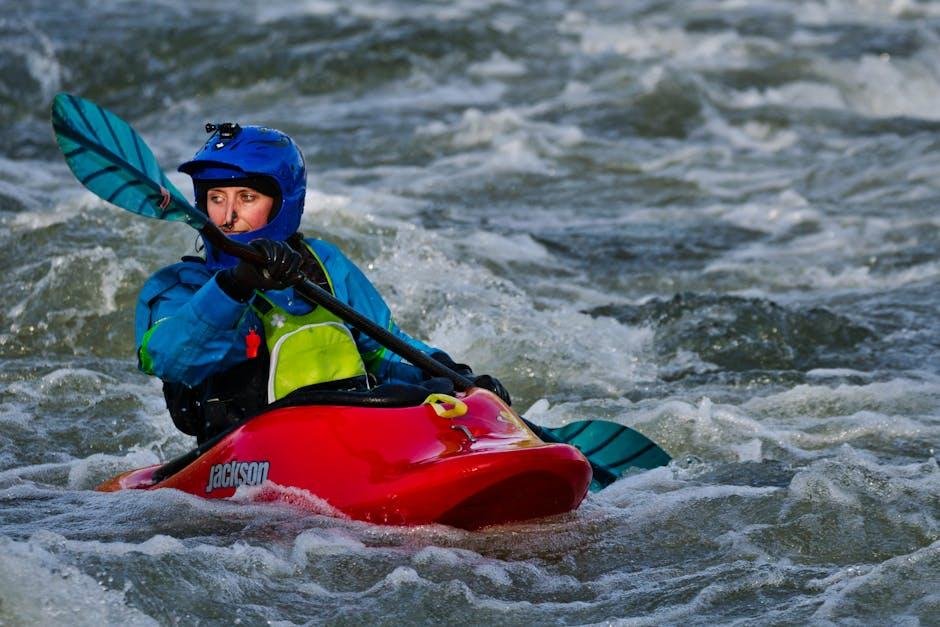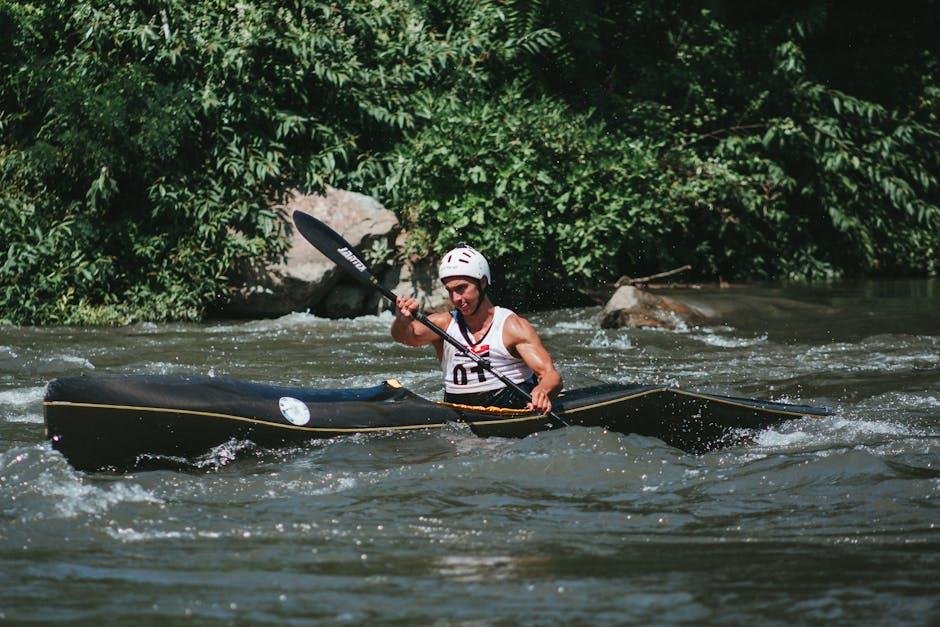Kayaking offers a thrilling way to connect with nature, glide across serene waters, and embrace the thrill of adventure. Though, for many newcomers to this beloved pastime, the thought of getting in and out of a kayak can be as daunting as navigating rapids. The fear of losing balance and taking an unexpected plunge can linger,overshadowing the joy of exploration. But fear not! With a few simple techniques and mindful practices,entering and exiting a kayak can be a smooth and graceful experience.In this article, we will explore practical tips and strategies to help you master the art of getting in and out of your kayak, ensuring that your excursions remain joyful and splashes are kept to a minimum. Whether you’re a beginner or looking to refine your skills, these insights will empower you to navigate both the water and your kayak with confidence.
Mastering the Approach: Selecting the Ideal Entry and Exit Point
When approaching the kayak, it’s essential to consider both the location and the method of entry. Look for a shallow section of water, ideally with minimal current, to ensure stability. Stand beside the kayak and try these techniques for a prosperous entry:
- Side Entry: Position yourself beside the kayak, hold onto the cockpit edge, and swing your legs in smoothly.
- Kneeling Entry: Kneel on the dock or stable surface, place one leg into the kayak while keeping the other on the dock, then gently settle down.
- Staggered Entry: If possible, stagger the kayak closer to land, placing one end on the shore, which minimizes the distance you need to step down.
For exiting the kayak, choose a calm moment when the water is still, and follow these guidelines to maintain balance:
- Turn the Kayak: Gently rotate the kayak towards the shore or dock to facilitate a safer exit.
- Foot Placement: Place your feet gradually into the water, ensuring the kayak remains stable as you shift your weight.
- Support: Use a nearby object, like a dock or a friend’s hand, for added support when lifting your leg out.

Balancing Act: Techniques for Staying Steady While Getting In and Out
When approaching the task of entering or exiting a kayak, it’s essential to maintain your balance while keeping the boat steady. To achieve this, consider these practical techniques:
- Use of a dock or Stable Surface: Whenever possible, use a dock or a solid platform to assist with entering and exiting. This provides a secure spot to balance your weight.
- Position Your Body Properly: Sit on the edge of the kayak and swing your legs in, placing your feet flat on the bottom. Keep your torso upright to lower your center of gravity.
- Have a Steadying Partner: If available, have someone hold your kayak steady while you get in or out, reducing the risk of tipping.
- Practice Paddling Techniques: Familiarize yourself with paddling strokes while seated to regain balance and confidence during entry and exit.
In addition to these techniques, you can follow these key tips to enhance your stability:
| Tip | Description |
|---|---|
| Wear appropriate gear | Lightweight clothing and a personal flotation device can improve comfort and safety. |
| Be mindful of the water | Assess the conditions—calm waters are easier to navigate when entering or exiting. |
| Practice makes perfect | The more you familiarize yourself with the process,the easier it becomes. |

The Perfect Position: Optimizing Your Body Mechanics for Stability
To ensure a stable entry into the kayak, start by positioning yourself for optimal balance. Kneel on the shore or a stable surface beside the kayak. When you’re ready to enter,keep your weight centered over your knees,and make sure to slide your feet into the kayak one at a time while maintaining that balance. By keeping your center of gravity low and your body aligned, you significantly reduce the risk of tipping. It’s crucial to engage your core muscles for additional stability, as they are key to controlling your movements throughout this process.
when exiting the kayak,the same principles of stability apply.Before you make your move, prepare your exit by positioning yourself in the middle of the seat and extending your legs out in front. Then, pivot your hips while keeping your torso straight.As you swing your legs out, maintain a firm grip on the kayak’s edges and use your core to control your descent onto the surface. To further assist in this transition, consider using the following tips:
- Look for a balance point: Identify a spot in the kayak that allows for even weight distribution.
- Engage with the surrounding environment: Use your non-dominant hand to stabilize against your kayak or nearby surface.
- Practice makes perfect: Hone your entry and exit technique in shallow water or on stable terrain before taking on deeper waters.

Safety First: Essential Tips to prevent Slips and Falls on the Water
When it comes to safely entering and exiting a kayak, balance and control are key. Start by approaching your kayak from the side, ideally on a flat and stable surface. Stand with your feet shoulder-width apart, keeping a low center of gravity. Before stepping into the kayak,ensure it is secured to prevent wobbling. Tip: Always wear a personal flotation device (PFD) while paddling, as it provides an extra layer of safety. Here are some pointers to follow while entering your kayak:
- Position yourself: Face the kayak, with one foot on the shoreline or dock.
- Step in with your stronger leg: Place it in the center of the kayak for balance.
- Sit down slowly: Engage your core to maintain stability as you lower yourself.
- Adjust your weight: once seated,shift your weight evenly to avoid tipping.
Exiting a kayak can be just as tricky, but it’s manageable with proper technique. Always be aware of your surroundings, ensuring that your exit area is clear of obstacles or uneven surfaces.Begin by shifting your weight towards the back of the kayak, bringing your feet up. Remember: Move slowly to avoid sudden shifts that could cause you to tip. Here’s how to exit your kayak safely:
- Plant your feet: Ensure both feet are firmly planted on the kayak floor.
- Maintain a sturdy grip: Hold onto the sides of the kayak or your paddle for support.
- Lean back slightly: This helps to stabilize the kayak as you prepare to exit.
- Step out carefully: Place one foot on the edge, and then follow with the other, ensuring you have balanced footing before fully stepping off.
Insights and Conclusions
mastering the art of entering and exiting a kayak with grace and stability is not just about avoiding a splash; it’s about embracing the joy of being on the water with confidence.With a blend of technique, patience, and practice, you can transform what may seem like a daunting task into a seamless transition that enhances your overall paddling experience.Remember, every kayaker was once a beginner, and each trip to the water is an chance to refine your skills. So, grab your paddle, find your balance, and embark on your next adventure with the assurance that you can conquer both the launch and the landing. Happy paddling!
